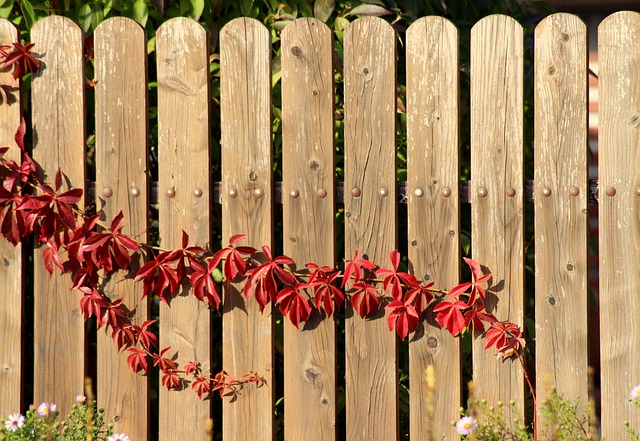Large properties present unique challenges when it comes to fencing, requiring solutions that balance aesthetic appeal, durability, and affordability. This article delves into cost-effective fencing options tailored for expansive landscapes, exploring alternatives to traditional methods. We’ll dissect the benefits of durable materials known for their low maintenance, offer creative design ideas suited to large spaces, and provide installation tips ensuring longevity and maximizing savings. By the end, readers will be equipped with insights to transform their properties while adhering to budget constraints.
- Understanding Large Property Fencing Needs
- Traditional Fencing vs Cost-Effective Options
- Durable and Low-Maintenance Materials
- Creative Design Solutions for Large Spaces
- Installation Tips for Longevity & Savings
Understanding Large Property Fencing Needs
Fencing large properties presents unique challenges compared to smaller plots. The primary consideration is durability; fencing must withstand harsh weather conditions, frequent animal interaction, and potential vandalism over an extended period. Additionally, aesthetic appeal is crucial for blending the fence seamlessly with the natural surroundings or existing architectural style of the property.
Security is another vital aspect, especially in rural areas where large properties often include valuable assets like livestock, equipment, and residences. The fencing solution should offer a balance between security and visibility, ensuring both privacy and safety without obstructing scenic views. This calls for strategic placement of fence types, incorporating features like electric fencing for livestock control and robust materials that deter unauthorized access.
Traditional Fencing vs Cost-Effective Options
Traditional fencing methods can be expensive and often require regular maintenance, which adds to the overall cost over time. These include materials like wood, vinyl, or metal that need frequent painting, sealing, or replacement due to wear and tear. In contrast, cost-effective fencing solutions offer a more affordable and low-maintenance approach. Options such as chain link fences, plastic or composite materials, and even natural barriers like hedges can significantly reduce expenses without compromising security or aesthetic appeal.
While traditional fences may provide a certain level of exclusivity, the latest cost-efficient alternatives cater to various budgets and property needs. For instance, chain link fences are durable and offer great value, especially for large properties. Similarly, synthetic materials mimic the look of wood or metal but at a fraction of the cost and with minimal upkeep. These modern options demonstrate that security and privacy can be achieved without breaking the bank.
Durable and Low-Maintenance Materials
When considering fencing solutions for large properties, opting for durable and low-maintenance materials is a smart choice. Modern advancements in fencing technology have led to the development of robust materials that can withstand harsh weather conditions and resist decay, rust, or rot. These include high-density polyethylene (HDPE) and vinyl, which are known for their longevity and ease of care.
Unlike traditional wooden fences that require regular painting, sealing, and maintenance, HDPE and vinyl fences are virtually maintenance-free. They are resistant to mold, mildew, and insects, ensuring your fence stays looking pristine throughout the year. This not only saves time and money but also contributes to a more sustainable approach to property management by reducing waste from frequent replacements.
Creative Design Solutions for Large Spaces
When it comes to large properties, fencing doesn’t have to be a one-size-fits-all affair. Creative design solutions can transform an ordinary boundary into a stunning feature that enhances the overall aesthetics of your space. Instead of a monotonous, straight line, consider incorporating curved sections or even intricate patterns to add visual interest. You could opt for a natural, organic look with winding paths that follow the terrain, creating a sense of flow and connection with the landscape.
Another innovative approach is to integrate plants directly into the fence design. Living fences, using fast-growing, dense shrubs or trees, offer both privacy and a dynamic, ever-changing visual. You can also incorporate vertical gardens along parts of your fencing, adding greenery and a unique architectural element that will attract attention and provide a refreshing contrast against vast expanses of land.
Installation Tips for Longevity & Savings
When installing fencing for large properties, prioritizing proper techniques and materials is key to achieving both longevity and cost savings. One crucial tip is to ensure a solid foundation; this involves preparing the ground adequately before setting the posts. Compacted soil or concrete foundations provide stability, preventing post rot and uneven settling over time. Additionally, using high-quality materials like treated wood or vinyl ensures durability against elements like moisture, pests, and UV rays, reducing the need for frequent repairs or replacements.
Regular maintenance plays a significant role in extending the fence’s life. This includes keeping the area around the posts clear of debris, regularly inspecting for signs of damage or rot, and promptly addressing any issues. Applying protective coatings or stains can also shield the fence from environmental stressors. By following these installation and maintenance practices, property owners can enjoy long-lasting fencing that not only enhances security but also adds value to their large properties while keeping costs down in the long run.
